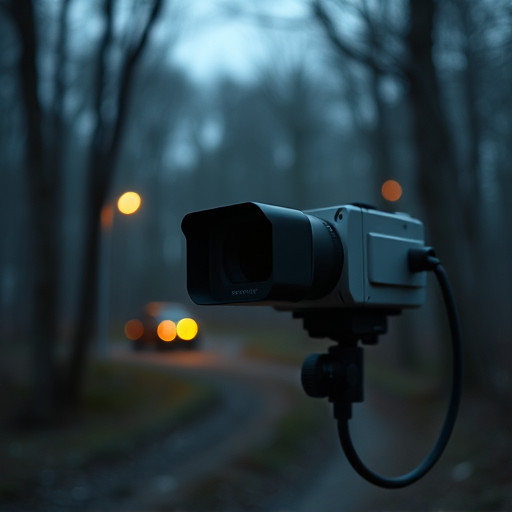Battery Operated Dummy Surveillance Cameras are crucial for initial network setup, offering discreet intelligence gathering without raising suspicion. Strategically placed in hidden locations like behind furniture or within cabinets, these wireless cameras provide insights into movement patterns and vulnerabilities while eliminating the need for frequent battery replacements. For long-term surveillance, smart power control systems optimize battery life, and weatherproof enclosures ensure resilience in remote locations. Ethical deployment requires adherence to local legal guidelines regarding privacy rights and data protection to avoid legal repercussions.
“Uncover the secrets of covert camera network installation with our comprehensive guide. In today’s world, battery-operated dummy surveillance cameras play a pivotal role in enhancing security and gathering insights. This article delves into the strategic deployment of these versatile devices, offering best practices for optimal placement and discreet usage.
We explore power management techniques to ensure seamless operations and discuss ethical considerations, aligning with legal guidelines, to maintain a delicate balance between privacy and security.”
- Understanding Battery Operated Dummy Cameras: Their Role in Network Installation
- Best Practices for Placement and Discretionary Use
- Ensuring Efficient Power Management and System Reliability
- Ethical Considerations and Legal Guidelines for Covert Camera Networks
Understanding Battery Operated Dummy Cameras: Their Role in Network Installation
Battery Operated Dummy Surveillance Cameras play a crucial role in the initial stages of network installation for covert camera systems. These cameras mimic real surveillance devices, offering a subtle and effective way to gather intelligence about potential security threats or unauthorized activities. By strategically placing them across a target area, security professionals can gain valuable insights into movement patterns, access points, and potential vulnerabilities without raising suspicion.
Unlike traditional wired cameras, Battery Operated Dummy Cameras provide flexibility and ease of deployment. Their wireless nature allows for discreet placement in hard-to-reach or remote locations, making them ideal for comprehensive network coverage. Moreover, these dummy cameras can operate on long-lasting rechargeable batteries, ensuring continuous monitoring over extended periods without the need for frequent battery replacements, which is a significant advantage for covert operations.
Best Practices for Placement and Discretionary Use
When planning the placement of a covert camera network, discretion is key. Battery operated dummy surveillance cameras can be strategically positioned in hard-to-see areas, such as behind furniture, within cabinets, or tucked away in corners, to avoid drawing attention. Consider the behavior and routines of individuals in the space to identify optimal locations that capture relevant activity without raising suspicion.
Additionally, varying camera angles and heights adds to the realism and effectiveness. Combining static cameras with mobile options, like those mounted on tripods or attached to objects that can be moved, allows for greater flexibility and coverage. Regularly reviewing footage and adjusting camera placement as needed ensures ongoing effectiveness and maintains the element of surprise, enhancing the overall security of the space.
Ensuring Efficient Power Management and System Reliability
In a covert camera network, power management is a critical aspect that often gets overlooked. However, efficient energy utilization and reliable system operation are key to maintaining a successful long-term surveillance strategy. One effective approach is leveraging Battery Operated Dummy Surveillance Cameras, which offer discreet power sources, allowing for remote and autonomous operations. By integrating these cameras with smart power management systems, you can ensure optimal battery life through adaptive power distribution and intelligent scheduling, minimizing the need for frequent manual intervention.
Reliability stems from robust design and redundancy measures. These dummy surveillance cameras are designed to withstand harsh environments, featuring weatherproof enclosures and durable components. Additionally, employing backup battery packs or integrating with renewable energy solutions like solar panels enhances system resilience, ensuring continuous operation even in remote locations where grid power is unavailable. Regular maintenance and remote monitoring further contribute to overall reliability, enabling quick issue resolution and proactive system health management.
Ethical Considerations and Legal Guidelines for Covert Camera Networks
When installing a covert camera network, ethical considerations and understanding legal guidelines are paramount. The use of battery-operated dummy surveillance cameras is one way to maintain privacy and avoid raising suspicions. These cameras mimic real security systems but are designed to be undetectable, making them a popular choice for discreet monitoring. However, their installation must adhere to stringent regulations to ensure compliance and ethical standards.
Each jurisdiction has its own set of rules governing the use of surveillance technology, particularly when it involves covert or hidden cameras. Property owners should familiarize themselves with local laws regarding privacy rights, data protection, and the legal definition of reasonable expectation of privacy. Respecting these guidelines is crucial to avoid potential legal repercussions and ensure the ethical deployment of covert camera networks.
The deployment of a covert camera network, leveraging battery operated dummy surveillance cameras, requires a balance between effective security measures and ethical considerations. By adhering to best practices for placement, power management, and discretion, while also staying within legal guidelines, you can create a robust and reliable system. These practices ensure not only the integrity of your network but also respect for privacy and individual rights.
